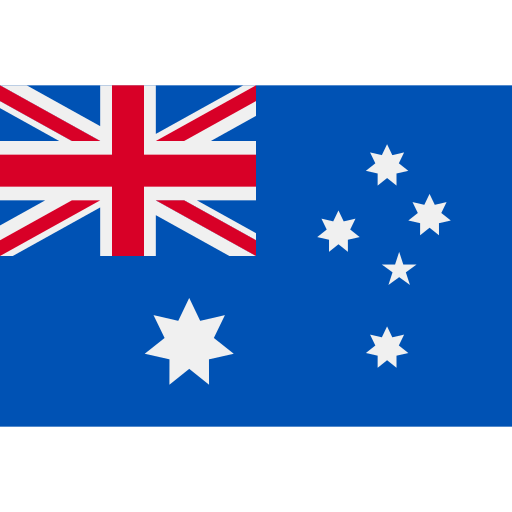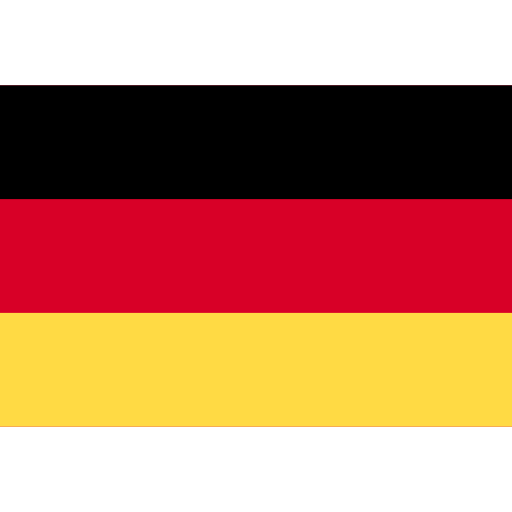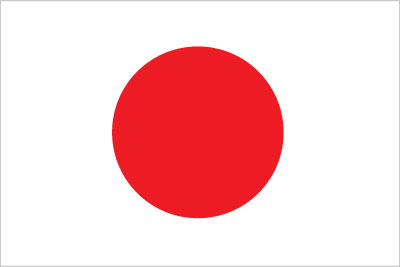- Topics
- Themes
-
Trade
Do you want to know how access to trade finance can increase your cross-border imports and exports? Explore our Trade Finance hub for practical tools.
Treasury
Are you a treasury or operations manager looking to mitigate the risks and efficiently manage your business’ cash flow? If so, check out our Treasury Management hub.
Payments
Whether you want updates from infrastructure support to cross-border transactions or clearing house operations to processing techniques, you can find all on our Payments hub.
Letters of Credit
Ready to to increase your imports / exports to guarantee the payment and delivery of goods? Find out more about LCs here.
Shipping & Logistics
Whether you’re transporting goods, or learning about supply chains, warehousing, transportation and packaging, we’ve got you covered.
Incoterms
Need to know which International Commerce Term is right for your needs? Explore our curated guides from shipping expert Bob Ronai.
Sustainability
Prioritising sustainable supply chains? Building inclusive trade? Working towards the UN’s 2030 SDGs? Read the latest on global sustainable standards vs green-washing here.
Customs
Heading into international markets? From the correct documentation to standardisation, here’s what you need to know for a streamlined customs clearance process.
TradeTech
TradeTech is rapidly evolving to help reduce some of the biggest challenges when it comes to trade. Keep up with these innovations here.
-
- News & Insights
-
News
The latest in Trade, Treasury & Payments - stay up to date on all the changes across the globe.
Magazines
The issues feature experts across the industry on the latest developments with specific themed and regional editions.
Articles
Insights by the industry, for the industry. These include thought leadership pieces, interview write ups and Q&As.
Guides
Working closely with industry experts and trade practitioners we provide inclusive educational guides to improve your technical knowledge and expertise in global trade.
Research & Data
We undertake qualitative and quantitative research across various verticals in trade, as well as create reports with industry association partners to provide in-depth analysis.
Trade Finance Talks
Subscribe to our market-leading updates on trade, treasury & payments. Join the TFG community of 160k+ monthly readers for unrivalled access in your inbox.
-
- Media
- Events
-
Partner Conferences
We partner with industry conferences around the world to ensure that you don’t miss out on any event; in person or online, add to your calendar now.
Women in Trade, Treasury & Payments
Get involved in our most important campaign of the year, celebrating the achievements of women in our industry and promoting gender equity and equality.
Awards
Our excellence awards in trade, treasury, and payments are like no other. You can't sponsor them, and they're independently judged. They are the most sought-after industry accolades.
Online Events
Join our virtual webinars and community events. Catch up on-demand, right here on TFG.
-
- Editions
- Themes
- Access Finance
- Finance Products
-
Trade Finance
Trade finance is a tool that can be used to unlock capital from a company’s existing stock, receivables, or purchase orders. Explore our hub for more.
Invoice Finance
A common form of business finance where funds are advanced against unpaid invoices prior to customer payment
Supply Chain Finance
Also known as SCF, this is a cash flow solution which helps businesses free up working capital trapped in global supply chains.
Bills of Lading
BoL, BL or B/L, is a legal document that provides multiple functions to make shipping more secure.
Letters of Credit
A payment instrument where the issuing bank guarantees payment to the seller on behalf of the buyer, provided the seller meets the specified terms and conditions.
Stock Finance
The release of working capital from stock, through lenders purchasing stock from a seller on behalf of the buyer.
Factoring
This allows a business to grow and unlock cash that is tied up in future income
Receivables Finance
A tool that businesses can use to free up working capital which is tied up in unpaid invoices.
Purchase Order Finance
This is commonly used for trading businesses that buy and sell; having suppliers and end buyers
-
- Sectors
-
Machinery & Equipment
Technology, construction, telecommunications, PPE, and electronics
Commodities & Materials
Raw materials, agricultural products, minerals, metals, and textiles
Chemical & Energy
Pharmaceuticals, chemicals, and energy products
Autos, Aerospace & Marine
Automotive, aviation, and marine industries
Pharma & Healthcare
Pharmaceuticals, healthcare equipment, and related sectors
Metals & Mining
Ores, minerals, metals, and concentrates
Finished Goods
Retail stock, e-commerce, textiles, clothing, and consumer goods
Construction & Projects
Construction, infrastructure, project finance, and green finance
Tech, Media & Telecom
Construction, infrastructure, project finance, and green finance
Food & Beverages
Food, drink, dairy, confectionery, and alcohol
Professional Services
E-commerce, recruitment, legal services, and hospitality
-
- Case Studies
-
Informing today's market
Financing tomorrow's trade
Soft Commodities Trader
Due to increased sales, a soft commodity trader required a receivables purchase facility for one of their large customers - purchased from Africa and sold to the US.
Metals Trader
Purchasing commodities from Africa, the US, and Europe and selling to Europe, a metals trader required a receivables finance facility for a book of their receivables/customers.
Energy Trading Group
An energy group, selling mainly into Europe, desired a receivables purchase facility to discount names, where they had increased sales and concentration.
Clothing company
Rather than waiting 90 days until payment was made, the company wanted to pay suppliers on the day that the title to goods transferred to them, meaning it could expand its range of suppliers and receive supplier discounts.
-
- Search
- Get Trade Finance
- Finance Products
- About Us
- Talk To Us
Lead Concentrates (SIC 1031)


Access trade, receivables and supply chain finance
We assist companies to access trade and receivables finance through our relationships with 270+ banks, funds and alternative finance houses.
Get startedContent
Understanding lead concentrates: Production, applications, and market dynamics
Lead concentrates are critical components in the mining and metallurgical industries.
They serve as essential intermediaries between the extraction of lead ore and its processing into refined lead.
These concentrates ensure a steady supply of lead, which is vital for various industrial applications.
As the demand for lead remains robust across several sectors, stakeholders must understand the intricacies of lead concentrates.
Global production and techniques
Lead is predominantly produced in countries with rich mineral resources, such as China, Australia, and the United States.
The production of lead concentrates involves mining lead ore, followed by processes such as crushing, flotation, and sometimes roasting to enrich the lead content to about 60-70%.
This process enhances lead concentration and helps recover valuable by-products such as silver and zinc, which can significantly increase the economic value of lead mining operations.
Composition and characteristics
Lead concentrates primarily consist of lead but often contain other valuable metals like zinc and silver.
The presence of these metals can vary depending on the ore’s geological source and the specific extraction techniques employed.
These variations in composition influence the processing methods and potential applications of the concentrates, making their precise analysis necessary for efficient refining.
Industrial applications
Lead concentrates are mainly processed to produce refined lead, which is then used in several applications:
- Battery manufacturing: Lead is essential in making lead-acid batteries, which are commonly used in vehicles and for storing electricity in renewable energy systems. These batteries are valued for their cost-effectiveness and ability to withstand numerous charge cycles.
- Radiation shielding: Due to its high density, lead is highly effective at blocking radiation. It is crucial in protective equipment and construction materials used in medical and nuclear industries to safeguard against radiation exposure.
- Alloys and pigments: Lead improves strength, malleability, and corrosion resistance in alloys, while in pigments, it has historically been used to create vibrant colours, although its use has decreased due to health and environmental concerns.
Market dynamics
A combination of supply-demand factors, international trade conditions, and environmental policies influences the market for lead concentrates:
- Supply and demand dynamics: The automotive industry, which relies heavily on lead-acid batteries, significantly influences the demand for lead. Additionally, developments in sectors like renewable energy storage continually drive the market for lead concentrates.
- International trade and stability: Trade policies and geopolitical factors in lead-producing countries can affect the availability and cost of lead concentrates. Disruptions in supply chains due to political instability or trade disputes can lead to price volatility.
- Environmental regulations: Due to lead’s toxic nature, the lead industry is susceptible to environmental regulations. Stricter regulations can increase production costs and impact the availability of lead concentrates by imposing more stringent controls on emissions and waste management.
Economic factors affecting prices
Several key factors affect the pricing of lead concentrates:
- Sector demand: Demand for lead concentrates is driven by their use in the automotive industry for lead-acid batteries and energy storage systems for grid stability and renewable energy. As these industries grow due to technological innovations and rising consumer demand, the demand for lead concentrates increases, subsequently elevating market prices.
- Resource availability: The production of lead concentrates depends on the availability and quality of lead ore. Easily accessible and high-quality lead ore facilitates efficient production, effectively meeting market demand. On the other hand, scarce or low-quality ore restricts supply, increasing prices.
- Refining capabilities: The efficiency and technological level of refining processes play a crucial role in the amount of refined lead produced. Advanced, efficient refining operations can meet market demand better and potentially reduce prices, whereas less efficient processes might lead to reduced output and increased market prices and volatility.
- Regulatory environment: Environmental and safety regulations significantly affect the lead concentrate industry by increasing production costs and imposing limits on output. These regulations can lead to higher operational costs, often passed on to consumers, and can restrict the volume of lead produced, impacting market supply and dynamics.
Trading and financial strategies
Lead concentrates are typically traded on the spot market, reflecting current market conditions and allowing participants to adjust quickly to price changes. They are also traded via forward and futures contracts to mitigate the risk of price fluctuations.
Financial instruments such as letters of credit are crucial for ensuring payment security and facilitating transactions in the international market.
Specifications for trading
Lead concentrates are traded in US dollars per metric ton and categorised under specific Harmonised System (HS) codes, which are essential for accurate product identification and tariff calculations.
Understanding lead concentrates’ production, applications, and market dynamics is essential for stakeholders to navigate this complex and crucial industry sector effectively.
With comprehensive knowledge of these aspects, industry participants can optimise their operations and strategies to capitalise on market opportunities.
What is the SIC Code for Metals Concentrates?
SIC Code
1031
Lead Ore
More information about other metals concentrates
Case Study
 TFG facilitated the financing of zinc concentrates transported from a supplier in Australia to a customer in India through a structured trade finance facility. This facility included a combination of export credit insurance and supply chain finance. Export credit insurance mitigated the risk for the Australian supplier by ensuring payment in case of buyer default, while supply chain finance enabled the Indian buyer to extend payment terms without impacting the supplier’s cash flow.
TFG facilitated the financing of zinc concentrates transported from a supplier in Australia to a customer in India through a structured trade finance facility. This facility included a combination of export credit insurance and supply chain finance. Export credit insurance mitigated the risk for the Australian supplier by ensuring payment in case of buyer default, while supply chain finance enabled the Indian buyer to extend payment terms without impacting the supplier’s cash flow.






















